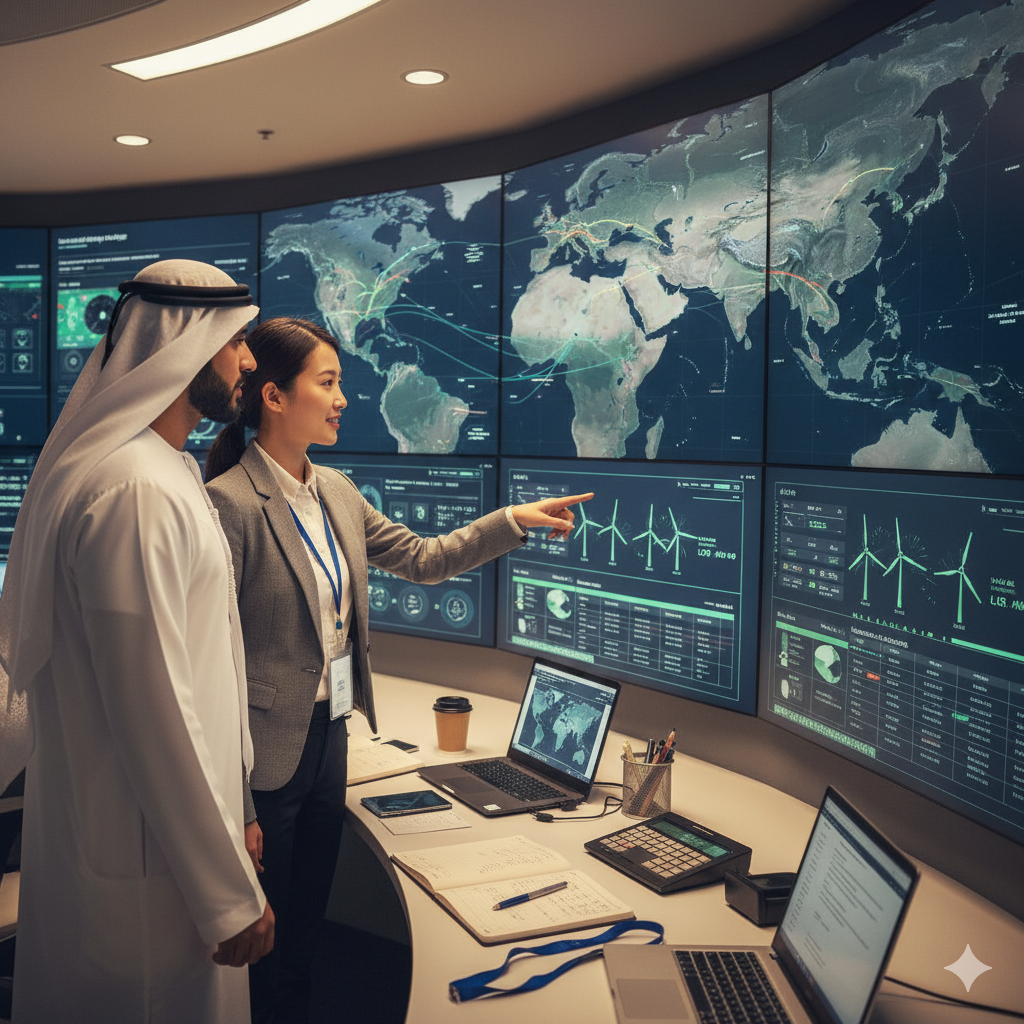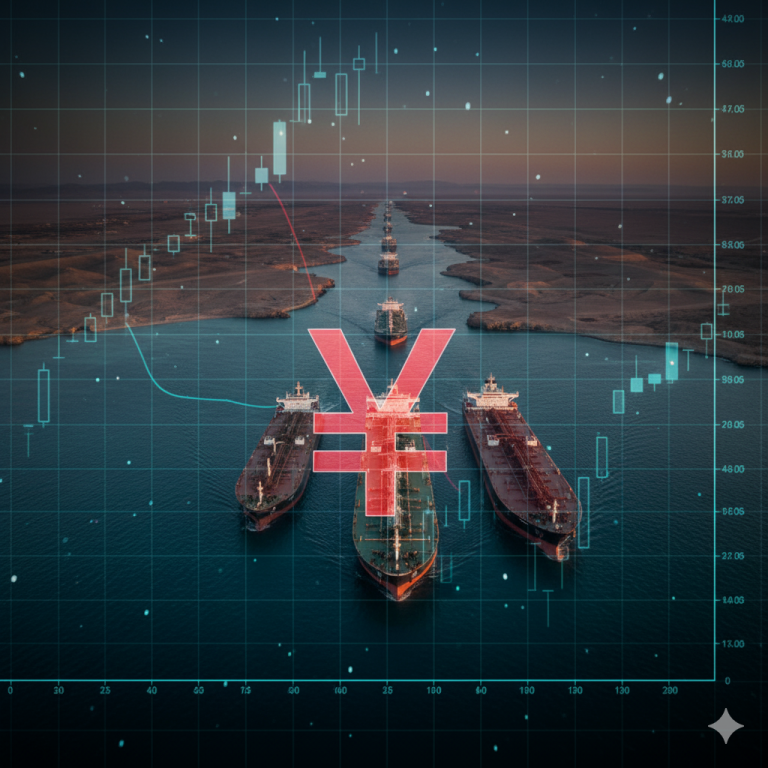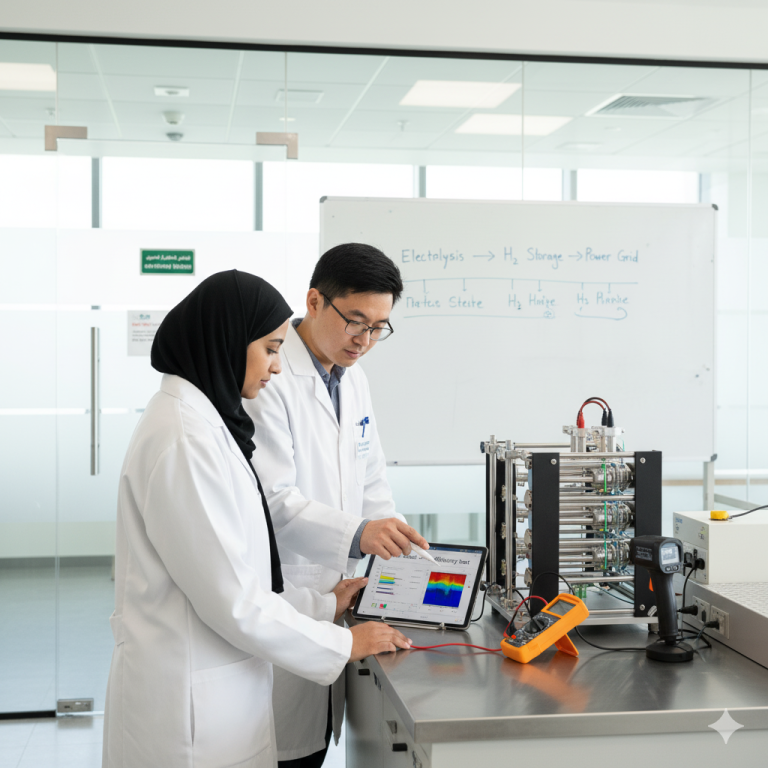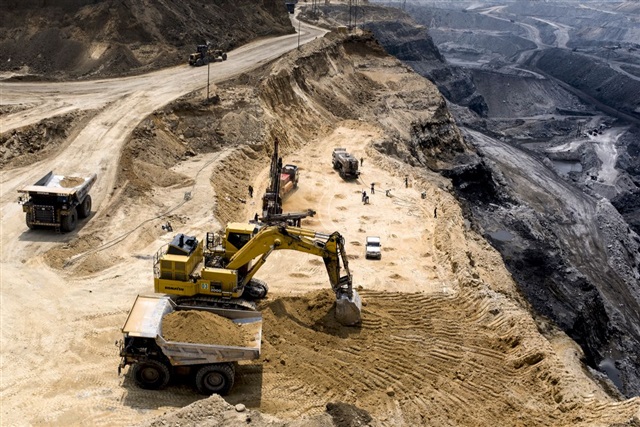A Hub of the World: The UAE’s Central Role in the BRI
In the intricate tapestry of global geopolitics and economic ambition, few nations command a position as strategically vital and dynamically evolving as the United Arab Emirates. Nestled at the crossroads of East and West, the UAE has long been a crucible of commerce and culture, a vibrant entrepôt connecting diverse civilizations. Yet, its contemporary significance transcends mere geography, as it increasingly asserts itself as a pivotal nexus within China’s ambitious Belt and Road Initiative (BRI). This grand vision, aimed at rekindling ancient trade routes with modern infrastructure, finds in the UAE not just a willing participant, but a central architect, particularly in the critical domain of energy cooperation. Through visionary leadership, robust economic policies, and a pragmatic embrace of global partnerships, the UAE is not merely observing the reshaping of global trade; it is actively steering its course, fostering deep and diversified energy collaborations that promise to redefine industrial landscapes and usher in a new era of international cooperation. This article delves into the industrial perspective, historical evolution, and future trajectory of China-UAE energy cooperation, underscoring the UAE’s indispensable role as a global hub within the BRI framework.
Historical Foundations of a Strategic Partnership
The narrative of China-UAE relations is one of remarkable growth, evolving from nascent diplomatic ties to a comprehensive strategic partnership. The formal establishment of diplomatic relations in 1984 marked the genesis of a bond that, over four decades, has burgeoned into a cornerstone of both nations’ global strategies. Initial trade exchanges, though modest, laid the groundwork for what would become an economic powerhouse. The early years saw a gradual increase in bilateral trade, driven by the UAE’s burgeoning oil wealth and China’s growing industrial needs. By 2024, bilateral trade had soared to a record $101.8 billion, an astonishing 800-fold increase from its 1984 volume [4]. This exponential growth underscores a shared recognition of mutual benefit and a deepening interdependence, reflecting a strategic alignment that has consistently propelled the relationship forward. The UAE’s proactive engagement with China, even before the formal launch of the BRI, demonstrated a foresight in recognizing the immense potential of this burgeoning Asian giant.
The relationship ascended to a strategic partnership in 2012, further solidifying in 2018 with the elevation to a comprehensive strategic partnership. These milestones were not merely ceremonial; they reflected a concerted effort to expand and diversify cooperation across a spectrum of sectors, including politics, economy, security, energy, and culture [1]. Early energy engagements, primarily in the traditional oil and gas sectors, formed the bedrock of this collaboration, with Chinese companies seeking reliable energy supplies and UAE entities looking for investment and market access. For instance, the involvement of Chinese firms in UAE’s oil concessions began to take shape, laying the groundwork for more extensive collaborations that would later integrate seamlessly into the broader BRI framework. This early trust and cooperation proved invaluable in scaling up future joint ventures.
The launch of China’s Belt and Road Initiative in 2013 proved to be a watershed moment. The UAE, with its forward-looking development agenda and strategic aspirations, found a profound alignment with the BRI’s objectives of enhanced connectivity, infrastructure development, and economic integration. The initiative, encompassing six urban development land corridors and the Maritime Silk Road, resonated deeply with the UAE’s own vision of becoming a global logistics and trade hub [7]. This convergence of interests provided a powerful impetus for the UAE to embed itself deeply within the BRI framework, transforming its role from a regional player to a global linchpin, actively contributing to the initiative’s success and shaping its trajectory in the Middle East and beyond.
The UAE: A Nexus of the Belt and Road Initiative
The UAE’s pre-eminence within the BRI is no accident; it is the logical outcome of its unparalleled geographical advantages and a deliberate, sustained investment in world-class infrastructure. Strategically positioned at the confluence of major shipping lanes and air routes, the UAE serves as a natural bridge between Asia, Africa, and Europe. Its state-of-the-art ports, such as Khalifa Port, and advanced logistics networks are not just regional assets but global facilitators of trade, making it an indispensable node in the BRI’s vast network [4, 6]. The expansion of these facilities, often with Chinese investment and expertise, has cemented the UAE’s role as a critical transit point for goods moving between continents, significantly reducing transit times and costs for global supply chains.
Beyond its physical infrastructure, the UAE has demonstrated a significant financial commitment to the BRI. Its investment of $10 billion in the UAE-China Joint Investment Cooperation Fund, specifically earmarked for BRI projects in East Africa, exemplifies its proactive role in extending the initiative’s reach and impact [6]. This financial backing is complemented by the establishment of industrial capacity zones, most notably the China-UAE Industrial Capacity Cooperation Demonstration Zone. These zones are designed to attract Chinese manufacturing and technology companies, providing them with a strategic base to access regional markets and integrate into global supply chains. This symbiotic relationship facilitates the transfer of technology and expertise, boosting the UAE’s industrial capabilities while offering Chinese enterprises a robust platform for international expansion [5]. The success of these zones is evident in the growing number of Chinese firms operating in the UAE, exceeding 15,000, which contribute significantly to local employment, economic diversification, and the development of a knowledge-based economy [4].
The synergy between the UAE’s strategic vision and the BRI’s objectives has profoundly enhanced the Emirates’ role as a global supply chain hub. The initiative has spurred a remarkable increase in non-oil trade between the UAE and BRI participating countries, reaching $305 billion in the first half of 2023, accounting for 90% of the UAE’s total non-oil trade during that period [6]. This surge in trade and connectivity underscores the UAE’s successful integration into the BRI, solidifying its position as a vital gateway for goods, capital, and innovation flowing across continents. The UAE’s commitment to facilitating trade is further demonstrated by its extensive network of bilateral agreements and MoUs with China, numbering over 148, which streamline commercial exchanges and foster a conducive environment for business, reducing bureaucratic hurdles and enhancing efficiency [6]. This robust framework ensures that the UAE remains at the forefront of global trade facilitation within the BRI.
Deepening Energy Cooperation: From Hydrocarbons to Renewables
The energy sector stands as a cornerstone of the China-UAE strategic partnership, evolving from traditional hydrocarbon trade to encompass a burgeoning collaboration in renewable energy. This multifaceted cooperation is characterized by significant investments, technological exchanges, and a shared commitment to energy security and sustainability.
In the realm of traditional oil and gas, the partnership is anchored by key players such as the Abu Dhabi National Oil Company (ADNOC) and China National Petroleum Corporation (CNPC), alongside other major entities like China National Offshore Oil Corporation (CNOOC) and Zhenhua Oil. Their collaboration spans the entire oil and gas industry value chain, from upstream exploration and development to downstream refining, petrochemicals, and market sales. Landmark projects like the Al Yasat concession, where CNPC became a partner of strategic energy assets in Abu Dhabi in 2013, and the North-East Bab fields, where CNPC was appointed as the asset leader in 2017, illustrate the depth of this cooperation. Further agreements in 2018 for the Umm Shaif & Nasr and Lower Zakum offshore fields solidified a comprehensive framework covering both onshore and offshore operations [3]. This integrated approach ensures efficiency and mutual benefit across the entire exploration and development industry chain, leveraging Chinese technological prowess in complex reservoir management and enhanced oil recovery techniques.
This strategic alignment was further underscored by the inauguration of ADNOC’s Beijing office in April 2025, a move designed to strengthen direct business relationships with Chinese customers and partners. This was swiftly followed by the announcement of three liquefied natural gas (LNG) agreements, including a monumental 15-year sales and purchase deal with ENN LNG (Singapore) for up to 1 million metric tons of LNG annually from the UAE’s low-carbon Ruwais project. This represents the largest LNG agreement ever between China and the UAE, highlighting China’s growing demand for reliable energy sources and the UAE’s capacity to meet it with increasingly sustainable production methods [5]. Further agreements with CNOOC Gas & Power Group and Zhenhua Oil underscore the breadth of this deepening energy alliance, positioning the UAE as a long-term, reliable energy partner for China, crucial for its industrial growth and energy security.
Beyond hydrocarbons, the focus has increasingly shifted towards renewable energy initiatives. Both nations recognize the imperative of energy transition, and their collaboration in this domain is robust. Chinese companies like Envision, specializing in renewables and smart energy management solutions, and China Energy Engineering Corporation (CEEC), active in energy and infrastructure projects, are actively involved in UAE’s renewable energy landscape, contributing to solar and other clean energy projects [2]. This partnership facilitates the transfer of cutting-edge technologies and expertise, accelerating the UAE’s journey towards a diversified energy mix. The UAE’s commitment to decarbonization, exemplified by its hosting of COP28 and its endorsement of the Oil and Gas Decarbonization Charter, aligns perfectly with China’s own green development goals, fostering a synergistic approach to sustainable energy solutions [3]. This includes joint research and development in areas like green hydrogen production, advanced energy storage, and smart grid technologies, further solidifying their leadership in the global energy transition and demonstrating a shared vision for a low-carbon future.
This evolving energy cooperation offers profound mutual benefits: it bolsters China’s energy security by diversifying its supply sources and provides the UAE with crucial investment and technological support for its economic diversification agenda. The strategic alignment ensures a stable energy future for China while positioning the UAE as a leader in the global energy transition, demonstrating a forward-thinking approach to global energy challenges and contributing significantly to global climate action.
Industrial Transformation and Economic Impact
The symbiotic relationship between China and the UAE, particularly within the BRI framework, has been a powerful catalyst for the UAE’s industrial transformation and economic diversification. The Emirates’ strategic imperative to reduce its reliance on oil revenues has found a strong partner in China, whose investments and industrial collaborations are reshaping the UAE’s economic landscape.
Chinese investment has been instrumental in driving economic diversification within the UAE. While traditional sectors remain strong, there’s a clear pivot towards advanced manufacturing, technology, and innovation. This shift is supported by the influx of Chinese capital and expertise, fostering new industries and enhancing existing ones. For instance, CNPC’s technological advantages in low-permeability carbonate reservoirs have been deployed to boost production and reduce costs in the North-East Bab fields, showcasing a direct impact on operational efficiency and resource optimization [3]. This strategic collaboration extends to various industrial sectors, including chemicals manufacturing, where companies like Wanhua have engaged with UAE counterparts, bringing advanced production techniques and market access [2]. The establishment of joint ventures in these sectors not only creates jobs but also builds local capabilities and supply chains.
Technology transfer and innovation are central to this transformation. Collaboration extends to cutting-edge areas such as reservoir simulation, drilling acceleration, smart oilfields, and Broadband, Wide-Azimuth, High-Density seismic exploration technology. These advancements not only enhance the efficiency of the energy sector but also cultivate a skilled local workforce and foster a culture of innovation. Furthermore, the development of hybrid drilling rigs by CNPC, which reduce fuel consumption and emissions, exemplifies a shared commitment to sustainable industrial practices [3]. The continuous exchange of technical and management expertise, facilitated by visits between ADNOC and CNPC representatives, ensures that both nations benefit from the latest advancements and best practices in the energy industry [3]. This knowledge transfer is critical for the UAE’s long-term industrial competitiveness.
Manufacturing growth in the UAE has been significantly bolstered by joint engineering construction projects. Initiatives like the BAB-Buhasa AiP5 off-plot project, the LNG Transmission Pipeline Project, and Project Swing are designed to substantially increase ADNOC’s capacity and operational efficiency. These projects also promote local project execution capabilities by integrating international engineering management models, thereby contributing to the UAE’s broader industrial development goals [3]. The China-UAE Industrial Capacity Cooperation Demonstration Zone, for example, is becoming a hub for advanced manufacturing, attracting investments in diverse sectors such as new materials, high-end equipment, and renewable energy components, and creating new employment opportunities for a skilled workforce.
The trade and investment figures paint a vivid picture of this robust partnership. The UAE’s non-oil foreign trade with China reached AED 296 billion ($81 billion) in 2023, maintaining China’s position as the UAE’s top trading partner, accounting for 12% of its total non-oil trade [6]. The ambitious target of $200 billion in trade volume by 2030 reflects the confidence and strategic intent of both nations, driven by diversified trade in goods and services [6]. Investment flows are equally impressive: between 2003 and 2023, UAE investment in China totaled $11.9 billion, spanning telecommunications, renewable energy, transport, storage, hotels, tourism, and rubber. Conversely, Chinese investment in the UAE reached $7.7 billion during the same period, primarily concentrated in trade, financial, insurance, and real estate sectors [6]. These figures highlight a balanced and mutually beneficial investment landscape, fostering economic resilience and growth for both partners.
Financial collaboration further underpins this economic synergy. Initiatives such as the Abu Dhabi Global Market’s roadshow in Shanghai and Hong Kong have attracted significant interest from Chinese financial institutions, aiming to deepen regulatory cooperation and expand bilateral investment flows [4]. The formation of the UAE-China Investment and Economic Cooperation Working Group is specifically designed to identify and facilitate new areas of economic partnership, ensuring a continuous pipeline of collaborative ventures [4]. The UAE’s role as the sole Chinese shareholder in the Abu Dhabi Futures Exchange further exemplifies the depth of financial integration and trust between the two nations [3]. This financial infrastructure supports the massive trade and investment flows, making the partnership even more robust.
Future Outlook: A Greener, More Integrated Future
The trajectory of China-UAE cooperation within the BRI framework points towards an increasingly integrated and sustainable future, with energy remaining at its core. The prospects for continued growth in the energy sector are immense, driven by both the ongoing demand for reliable hydrocarbon supplies and the accelerating global transition to cleaner energy sources. The strategic agreements between ADNOC and Chinese energy giants, covering the entire oil and gas value chain, ensure a stable and expanding partnership in traditional energy. Simultaneously, the joint ventures and investments in renewable energy, particularly solar, are poised for significant expansion, aligning with both nations’ long-term environmental and economic objectives [3, 5]. This includes exploring new frontiers in green hydrogen production, carbon capture technologies, and advanced energy storage solutions, further solidifying their commitment to a sustainable energy future and positioning them as leaders in the global energy transition.
Beyond energy, emerging areas of cooperation are rapidly gaining prominence. Digital transformation, artificial intelligence, healthcare, and advanced manufacturing represent new frontiers for collaboration. The UAE’s vision for a knowledge-based economy, coupled with China’s technological prowess, creates fertile ground for joint innovation and development in these high-growth sectors. For instance, collaborations in smart city development, fintech, biotechnology, and space exploration are expected to deepen, leveraging the strengths of both economies and fostering cutting-edge advancements [1]. This diversification of partnership areas will further strengthen the resilience and breadth of the bilateral relationship, ensuring its relevance and dynamism in a rapidly changing global landscape.
Crucially, the future of this partnership is also being shaped by strengthening people-to-people ties. Cultural exchange programs, such as CNPC’s Hundred Schools Project for Chinese language education in the UAE, foster mutual understanding and appreciation, building a foundation of trust and shared values that transcend economic interests [3]. Furthermore, the UAE’s Emiratization policy, aimed at developing local talent, is supported by Chinese companies through training and employment opportunities, ensuring that the benefits of this collaboration are widely shared and contribute to national development goals [3]. Academic exchanges, tourism initiatives, and joint cultural events also play a vital role in deepening these bonds, creating a more interconnected and harmonious relationship between the two peoples.
While the outlook is overwhelmingly positive, both nations remain cognizant of the need to address potential challenges. Sustainable development and environmental considerations are paramount, particularly in large-scale infrastructure and energy projects. The UAE’s active role in global climate initiatives, such as COP28, and its commitment to the Oil and Gas Decarbonization Charter, signal a proactive approach to mitigating environmental impacts [3]. Both countries are increasingly focusing on green BRI projects, ensuring that economic development is balanced with ecological preservation and responsible resource management. Geopolitical stability in the broader region also remains a key factor, requiring continuous diplomatic engagement and a shared commitment to peaceful development and multilateralism, reinforcing the principles of mutual respect and non-interference.
In conclusion, the United Arab Emirates has unequivocally cemented its position as an indispensable hub within China’s Belt and Road Initiative. Its strategic location, forward-thinking economic policies, and a deep, evolving partnership with China have transformed it into a dynamic conduit for trade, investment, and energy cooperation. From the historical foundations of diplomatic engagement to the future horizons of green energy and digital innovation, the UAE exemplifies a model of international collaboration that is not only mutually beneficial but also contributes significantly to sustainable global progress. As the world navigates an increasingly interconnected and complex future, the UAE’s central role in the BRI stands as a testament to the power of strategic partnership in shaping a more prosperous and integrated world.
References
[1] UAE and China explore strengthening of cooperation in trade, investment, energy, manufacturing, technology, health & transportation. (2025, August 15). Ministry of Economy & Tourism – UAE. Retrieved from https://www.moet.gov.ae/en/-/uae-and-china-explore-strengthening-of-cooperation-in-trade-investment-energy-manufacturing-technology-health-transportation?p_l_back_url=%2Fen%2Ftest1%3Fcategory%3D101580%26category%3D752020%26delta%3D40%26start%3D6
[2] UAE, China explore opportunities to strengthen cooperation in energy, renewables, industry, infrastructure. (2025, June 26). Emirates News Agency. Retrieved from https://www.wam.ae/en/article/bkdqy2b-uae-china-explore-opportunities-strengthen
[3] HAO NAN. (2025, September 1). CNPC’s high-quality development in the UAE. China Daily. Retrieved from https://global.chinadaily.com.cn/a/202509/01/WS68b51611a3108622abc9e331.html
[4] The UAE and China: shaping global progress. (2025, June 30). The Report Company. Retrieved from https://www.the-report.com/reports/united-arab-emirates/uae-teo/the-uae-and-china-shaping-global-progress/
[5] Yang Chuanli. (2025, April 21). UAE and China deepen energy cooperation. China.org.cn. Retrieved from http://www.china.org.cn/business/2025-04/21/content_117835605.htm
[6] WAM – Emirates News Agency. (2024, September 10). UAE emerges as key player in global development, strengthens BRI role. China Daily Hong Kong. Retrieved from https://www.chinadailyhk.com/hk/article/592722
[7] Belt and Road Initiative. (n.d.). Wikipedia. Retrieved from https://en.wikipedia.org/wiki/Belt_and_Road_Initiative







